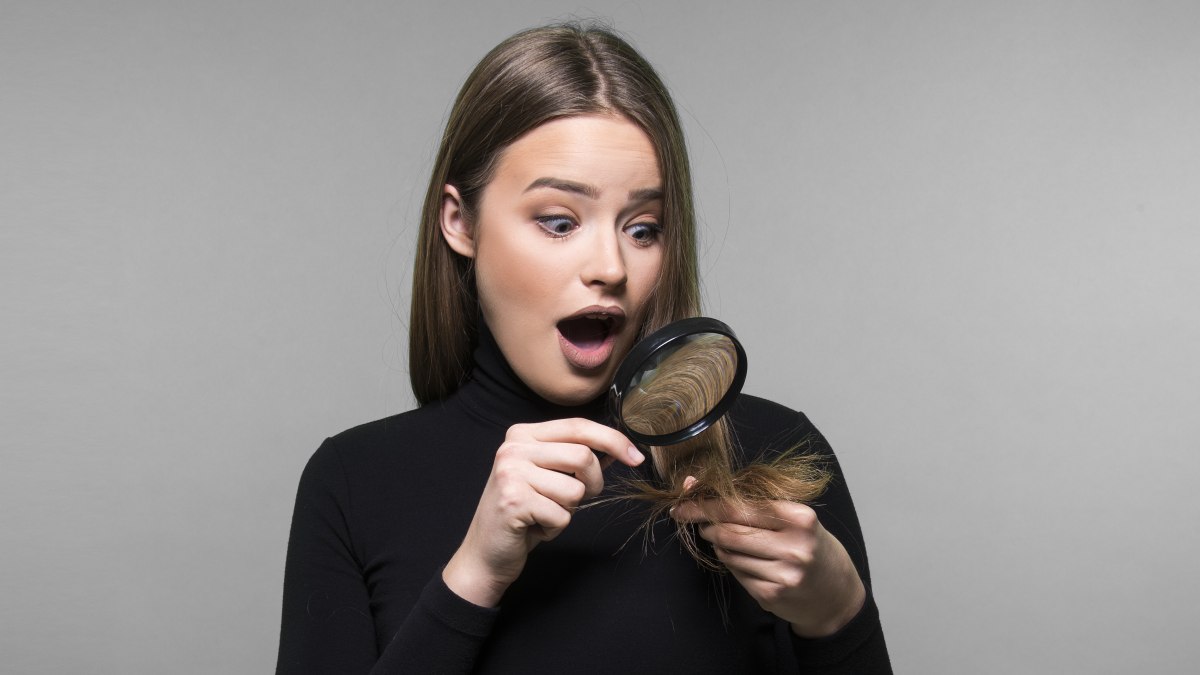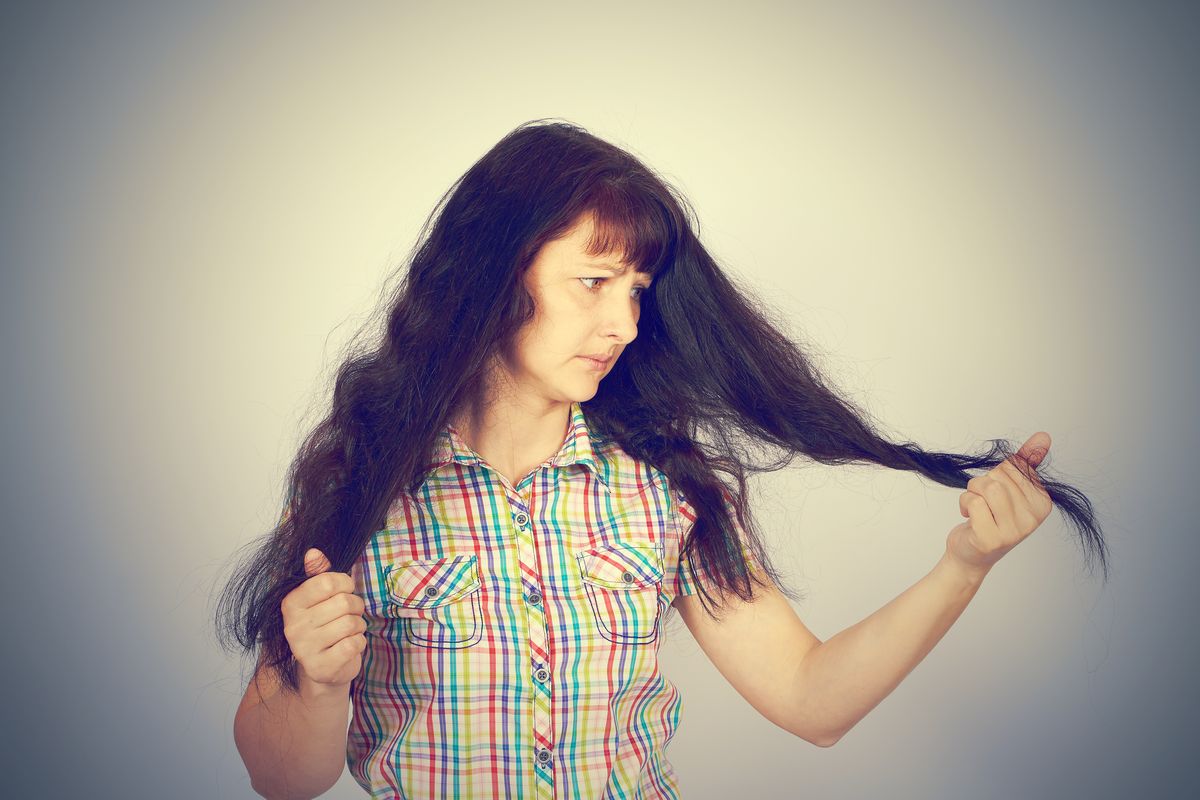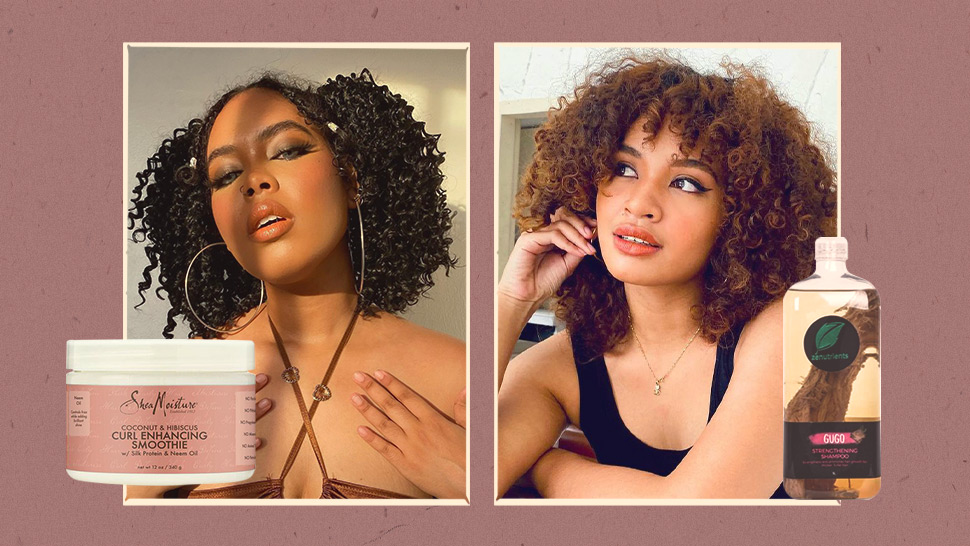Table Of Content

While fish oil isn't usually a first choice when it comes to topical hair treatments, it can hold the key to hair growth and repair. The rich fatty acids found in fish oil are said to support stronger strands, trigger circulation in the scalp, and promote hair growth. While you may not think twice about wrapping your hair up in a regular towel, doing so may increase the likelihood of developing split ends.
The Best Hair Masks 2024 The Strategist - New York Magazine
The Best Hair Masks 2024 The Strategist.
Posted: Fri, 26 Jan 2024 08:00:00 GMT [source]
Don't sleep on wet hair if you can avoid it
Like a magic trick, the best split end treatments will make them vanish before your very eyes (albeit temporarily). Typically identified by a frayed, scraggly look, these dead ends can ruin any healthy-looking style. If you have to comb through your hair after you shower, try towel drying until it's not dripping, then apply a leave-in conditioner all over hair before attempting to detangle. The tool you choose to use matters here — Davis recommends opting for a wide-toothed comb or a Wet Brush, which is specifically designed to protect wet hair. Despite the fact that there are products marketed and geared toward fixing split ends, they do not provide enough help. Since there are no treatments or cures for split ends, the only way to get rid of them is to get your hair cut or trimmed.

Keep your heat tools on low for less damage
When you have split ends, your hair needs more hydration than ever. “[Conditioners] coat wet hair so it’s easier to detangle, which can lead to less damage and make it softer and more manageable,” Aral says. Split-end hairs can happen to anyone at any time—they do not discriminate when it comes to race, age, or gender. While hair is generally strong, it is still susceptible to damage from wear and tear.

Can you actually repair split ends?
So you’ll have to trim or cut off damaged hair to prevent further damage. To best understand how to fix split ends, we tapped three professional hairstylists to ask them everything there is to know about preventing, treating, and masking them. Below, find their insights so you can stretch the time in between haircuts. Since the most effective “cure” for split ends is to cut them off (a remedy that can be quite drastic for those who want to keep their length), the work then lies in a diligent everyday hair care routine. What we love about this heat protectant is that it prevents your hair from the damaging effects of heat and mechanical styling and infuses hair with lightweight conditioning nourishment.
Frizz Minimizer: Color Wow Pop + Lock
This doesn't mean you have to take a break from heat completely (unless you want to, then more power to you). "Tree splits typically are the result of going too long without a trim or haircut," Reavey says. "When split ends are left untouched, they are more prone to cause additional damage." There’s no remedy for split ends once you have them — the only option is to trim them off.
Best Hair Oil: Kérastase Nutritive Split Ends Serum
But if that is not an option, there are a few tricks you can use, such as documenting your hair baseline, checking the appearance of your hair fibres thoroughly and questioning your hair care routine. If you’re heading to social media to find tutorials on how to trim split ends, we should warn you that it’s best to turn to a salon instead of DIY at home. The last thing you want is for your damaged hair fix to turn into a haircut nightmare.
New Virtue Hair Serum Promises to Fix Split Ends - WWD
New Virtue Hair Serum Promises to Fix Split Ends.
Posted: Mon, 05 Feb 2024 08:00:00 GMT [source]
"Be careful not to over-scrub your ends with your hands," Hans warns. Even if you use the best products on the market, manual damage is certainly still possible. Keeping your hair well-nourished and avoiding certain habits can go a long way toward improving the overall health and appearance of your hair. Rather than sleeping on a cotton pillowcase, sleep on a silk or satin pillowcase to reduce friction.
Here, celebrity hairstylists Mark Townsend and Laura Polko break down all the things you may be doing to speed up the creation of split ends, and what you can do to protect your strands. In fact, the American Academy of Dermatology (AAD) states that many of the hair care myths you once thought to be beneficial to your hair can actually do more damage than good. Check out these common practices that could be the culprits for your split ends. If your ends are already splitting, give them a ton of TLC with shampoos and conditioners that will proactively work against further breakage.
How often should one trim the hair?
But hair is actually most susceptible to being damaged when it’s wet — which means when you’re brushing out tangles post-shower, you could actually cause breakage. Instead of using a brush to detangle knotty hair, opt for a wide-tooth comb to gently work out knots while your hair is still wet. While hair mousse and hair gel are fabulous for styling, if you have split ends you need a product that can style and also help protect your strands and reduce future damage. That’s exactly what the L’Oréal Paris Elvive Dream Lengths No Haircut Cream Leave In Conditioner does. This hydrator seals split ends and strengthens long hair while offering 450-degree heat protection.
It’s the best of both styles, plus you get rid of that undesirable damaged hair. Not only can heat styling do damage, but certain hairstyles — even heat-free ones — can do harm. The AAD warns against continuously wearing different braided hairstyles, cornrows, ponytails, and hair extensions, as these styles pull on the hair and can cause tension that leads to breakage. While you're at it, make sure you're using the right hair brush, too.
Some types of hair get split ends more easily than others, due to their structure and texture. For example, curly and kinky hair is more likely to fracture when washed or brushed, due to the small angle of the curls [5]. This happens when hair is brushed too vigorously, scrubbed too hard when washed or simply rubbed against your clothes or other strands of hair [3][4]. Look for signs of dull, brittle hair, frizziness, uneven strand length and thinning towards the lower section of the strands. "When you pick them, you're splitting the hair and leaving the end more fragile than it was before," says Polko.

No comments:
Post a Comment